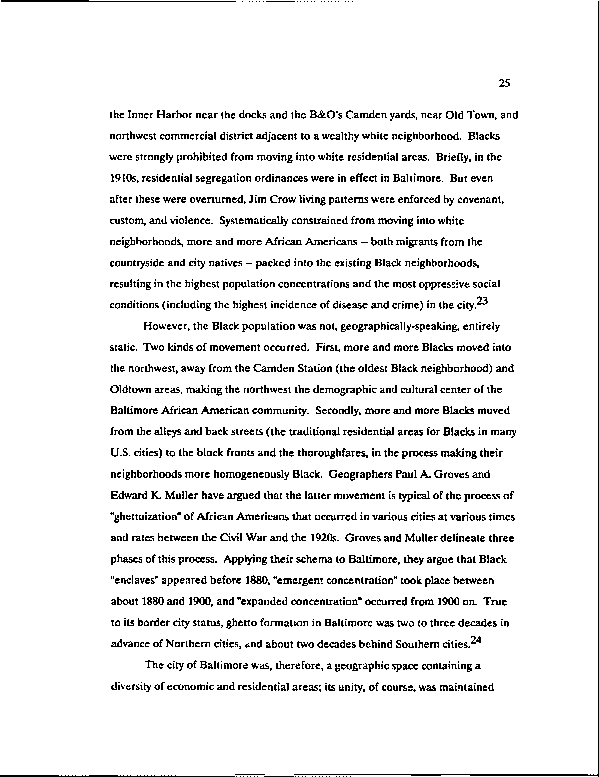|
25
the Inner Harbor near the docks and the B&O's Camden yards, near Old Town, and
northwest commercial district adjacent to a wealthy white neighborhood. Blacks
were strongly prohibited from moving into white residential areas. Briefly, in the
1910s, residential segregation ordinances were in effect in Baltimore. But even
after these were overturned, Jim Crow living patterns were enforced by covenant,
custom, and violence. Systematically constrained from moving into white
neighborhoods, more and more African Americans — both migrants from the
countryside and city natives - packed into the existing Black neighborhoods,
resulting in the highest population concentrations and the most oppressive social
conditions (including the highest incidence of disease and crime) in the city.
However, the Black population was not, geographically-speaking, entirely
static. Two kinds of movement occurred. First, more and more Blacks moved into
the northwest, away from the Camden Station (the oldest Black neighborhood) and
Oldtown areas, making the northwest the demographic and cultural center of the
Baltimore African American community. Secondly, more and more Blacks moved
from the alleys and back streets (the traditional residential areas for Blacks in many
U.S. cities) to the block fronts and the thoroughfares, in the process making their
neighborhoods more homogeneously Black. Geographers Paul A. Groves and
Edward K. Muller have argued that the latter movement is typical of the process of
"ghettoization" of African Americans that occurred in various cities at various times
and rates between the Civil War and the 1920s. Groves and Muller delineate three
phases of this process. Applying their schema to Baltimore, they argue that Black
"enclaves" appeared before 1880, "emergent concentration" took place between
about 1880 and 1900, and "expanded concentration" occurred from 1900 on. True
to its border city status, ghetto formation in Baltimore was two to three decades in
advance of Northern cities, «md about two decades behind Southern cities.
The city of Baltimore was, therefore, a geographic space containing a
diversity of economic and residential areas; its unity, of course, was maintained
|

